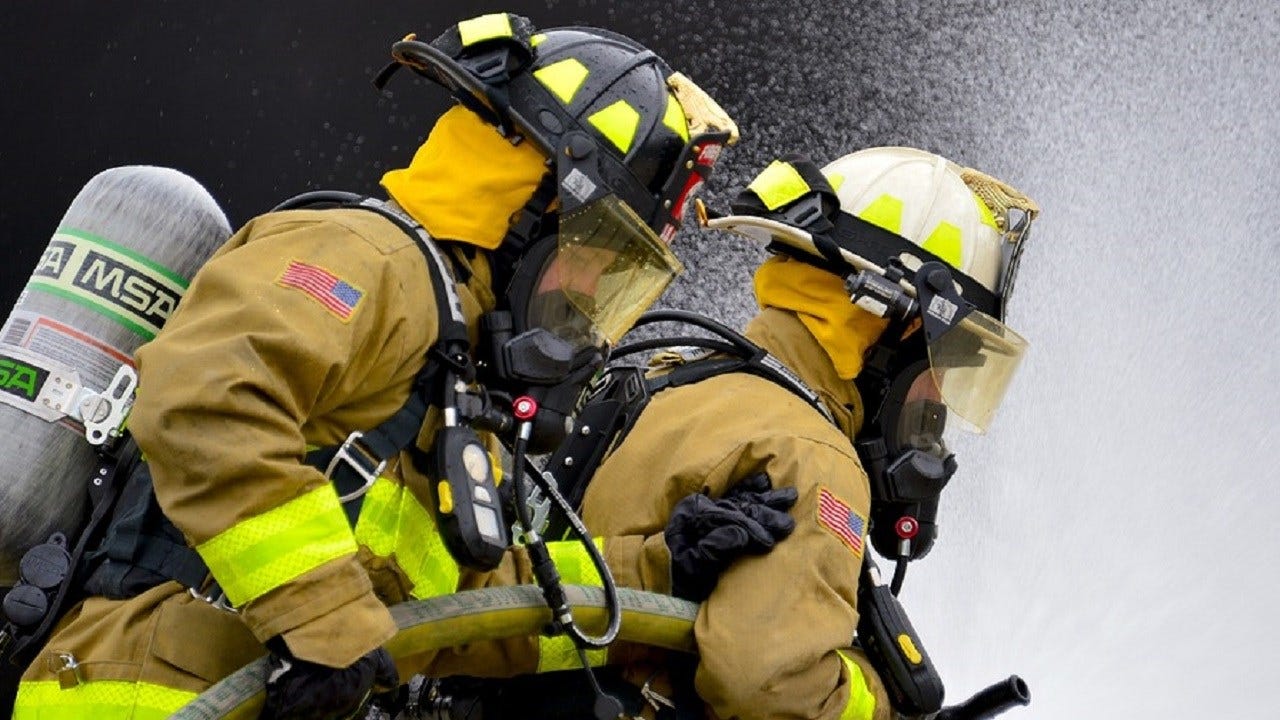The Mystery of Cancer in Firefighters: Two Indiana Researchers Uncover Clues
 (photo courtesy: International Association of Fire Chiefs)
(photo courtesy: International Association of Fire Chiefs)
Subscriber Benefit
As a subscriber you can listen to articles at work, in the car, or while you work out. Subscribe NowThere’s a lot of conjecture about cancer in the world of firefighting, but a crescendo of anecdotal—and scientific—evidence is driving two Indiana researchers to search for answers. One has uncovered data that confirms what was long suspected: Indiana firefighters are more likely to die from cancer than non-firefighters. And the other researcher is, for the first time in his career, hoping his hypothesis is wrong, because he suspects firefighters’ turnout gear—the clothing designed to protect them—could be one cause of the cancer.
Large national studies have confirmed cancer-related deaths among firefighters are increasing, compared to the general population, but Richard M. Fairbanks School of Public Health at IUPUI doctoral student Carolyn Muegge wanted to drill down to Indiana data.
“Firefighting in Indiana is not firefighting across the nation; think of the woodland fires or work that firefighters might do in Boston or New York City—it’s different,” says Muegge, who is also a research scientist at the National Institute for Public Safety Health. “It was important that we examine Indiana firefighters, so we don’t have to translate the data that is occurring in the fire service for other states.”
Her study, which analyzed data from 1985 to 2013, found that malignant cancers were the leading cause of death for Indiana firefighters. Muegge’s analysis of thousands of death certificates also revealed that Indiana firefighters are 20 percent more likely to die from cancer than non-firefighters. Heart disease was the leading cause of death among firefighters until 1995, when cancer “significantly surpassed heart disease.”
But the national data suggests that something all firefighters share in common could be contributing to the cancer trend. It was a personal note from a firefighter’s wife in Massachusetts that moved University of Notre Dame Professor of Experimental Nuclear Physics Dr. Graham Peaslee to search for a cause. She wrote about her husband, who survived cancer, and many other young firefighters in his company who were also diagnosed.
Peaslee asked for some of the firefighters’ turnout gear, such as the protective pants and jackets, to test in his lab and discovered it was “absolutely loaded with [perfluorinated alkyl substances (PFASs)].”
Peaslee says the perfluorinated compounds, which have been linked to certain cancers, are widely used to make products like Teflon, used in nonstick cookware, and firefighting foams—specifically for jet fuel fires. Firefighters’ gear is also coated with Teflon to help repel water; protective clothing that already weighs 60 pounds would be unbearably heavy with added water weight.
“The worry is, could PFASs not just be all on the material? What if these chemicals also come off just with normal wear and tear? Every fabric I’ve ever seen sheds, and so I suspect these fabrics shed too,” says Peaslee. “If it comes off on their skin, and they’re sweating, is it possible this chemical can go into the body? The answer is, unfortunately, it’s possible.”
Peaslee is now launching a pro bono study of new and used turnout gear, analyzing which molecules come off and in what conditions. His lab has developed an innovative and inexpensive method to measure PFASs.
“For the first time in my life, I’d really like one of my studies to turn out, ‘No,’” says Peaslee. “But if it turns out the study shows [the chemical] comes off—and I’m almost sure that will happen—and [another] study shows it gets through the skin—which I’m not sure of at all, that’s somebody else’s study—then we have a real issue, and we may have been poisoning [firefighters] without knowing it.”
Peaslee notes the importance of his study being independent, and therefore, not funded by industry. And while Peaslee says he didn’t intend to become a voice for firefighters, many have friended him on Facebook, grateful for his help “because nobody was telling them anything.”
“If [the higher cancer risk] is something coming from their personal protection equipment, it would be the ultimate irony. We can’t say that it is yet, but we can’t say that it isn’t, despite the manufacturers’ insistence that it isn’t,” says Peaslee. “There are valid concerns, and I think they have to be addressed. I’m willing to do it, because it’s just the right thing to do.”
Muegge is hopeful her paper, published in the American Journal of Industrial Medicine, encourages fire operations to create additional policies that protect firefighters’ health.
Peaslee is also concerned about how the turnout gear is disposed, because the chemical lasts forever.
While exposure to smoke and fumes is a factor, Peaslee suspects the cancer risk could be associated with something more “insidious.”
